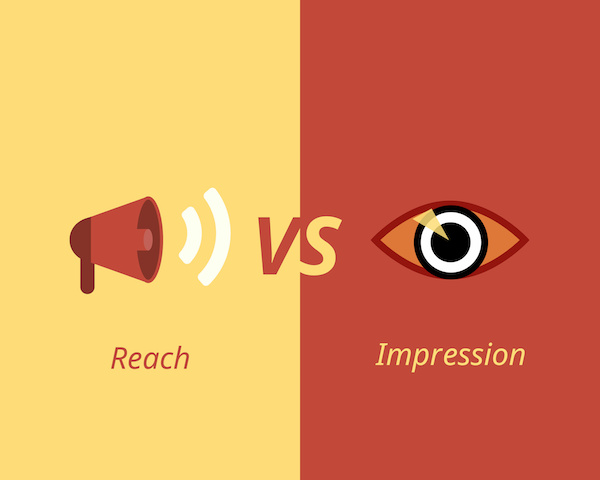
Are you working towards building brand awareness? Have you done what seems like everything possible to grow and influence your audience using a wide variety of digital marketing services and tools? If these explanations resonate with you, it’s critical for you to better understand the difference between reach vs. impressions. Since each metric requires a different strategic approach, accurately measuring these metrics will help you to find areas to increase your efforts without wasting time and money.
Reach vs. impressions: What’s the difference?
In terms of digital marketing, “reach” refers to the total number of people who see your content, whereas, “impressions” refers to the number of times your content is displayed, no matter if it was clicked or not. This is a metric primarily that’s used in social media marketing and pay-per-click advertising.
Since every social media follower can’t see all of the posts that you publish organically, if your goal is to increase engagement on a particular platform to ensure content is delivered to your target audience, reach and impressions are great analytics to examine.
Let’s dig a bit deeper
There are many similarities between reach and impressions, however, there are some underlying differences as well. Let’s use an example to further your understanding. If your company has 1000 followers on Instagram and you publish a post, if every one of your followers sees that post, you have a reach of 1000 users—along with 1000 impressions. However, if you update your post and all of your followers, once again, see your post, your reach doesn’t change, but you now have 2000 impressions. This is partly why you may notice that your impressions can be higher than your follower count.
Learning more about engagement
Building brand awareness is about getting your message to the right people. This can be done by improving your reach and impressions. To ensure that you get the most out of each social platform and ad campaign, you will want to analyze the metrics offered by each network. While it would take many pages to break down the process for each social media platform, for this blog, we will focus on Facebook.
On Facebook, reach falls into three different categories:
- Organic: The number of unique people who see your content in their news feed.
- Paid: The number of unique people who see your paid content (ex. Facebook Ad).
- Viral: The number of unique people who see your post or page mentioned in a story published by a friend. These stories include actions such as liking, sharing, or commenting.
Similar to reach, Facebook impressions are also split into the same three different categories:
- Organic: The number of times your content was displayed on someone’s news feed.
- Paid: The number of times your paid content was displayed.
- Viral: The number of times content associated with your page was displayed in a story published by a friend.
A great understanding of building brand awareness must be before engagement, reach, and impressions can drive your target audience to take action. If you’re ready to get your social media marketing and pay-per-click marketing on track, please contact Trek Marketing’s Sales Team to get started.
What did you find most interesting about the above blog? Drop a comment below to share with our readers.
Alex Wilks has been working as a copywriter and digital marketing strategist since 2018, with added specialties in social media and email marketing. With a Bachelor’s Degree in Journalism and Communication, she is a natural content writer with the ability to connect well with her target audience.


